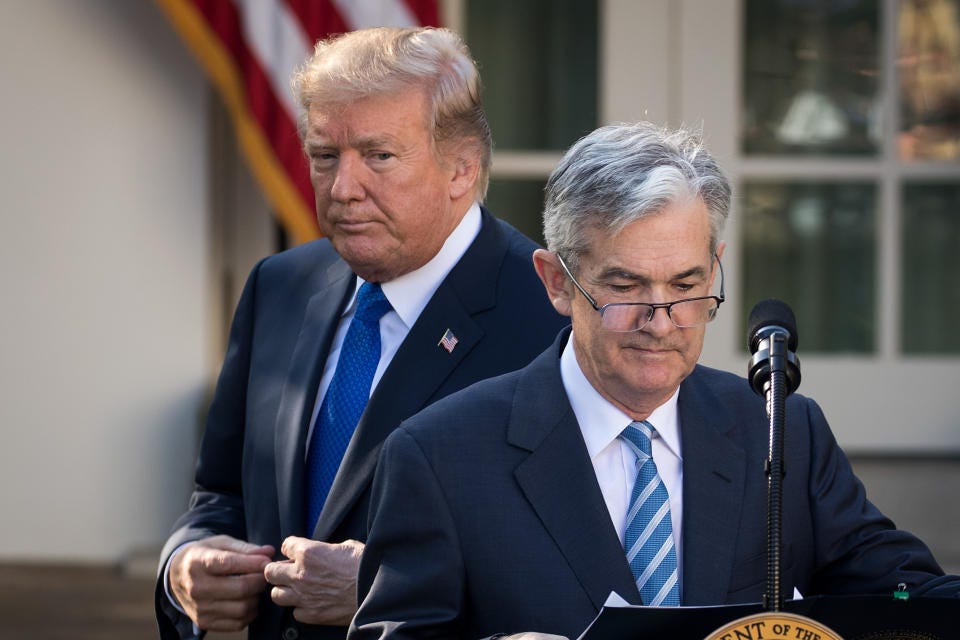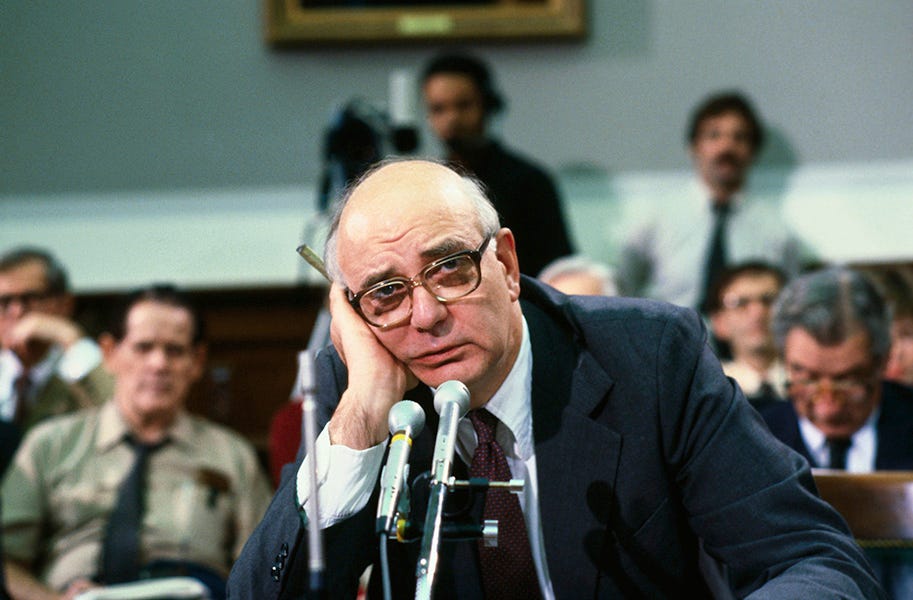Jerome Powell's Warning
Preparing for Stagflation
The Warning Signs
Jerome Powell, the Federal Reserve Bank chair, recently reported that the U.S. economy is at risk of experiencing slowing growth coupled with persistent inflation. This economic predicament is what economists call stagflation—a stagnating economy that simultaneously faces rising prices.
Powell's candid assessment was met with sharp rebuke and even threats of termination from the administration. This political pressure comes at a critical moment when the Supreme Court is evaluating whether the president can fire chairs of independent agencies, including the Federal Reserve. The timing couldn't be more consequential for our economic stability.
Learning from the 1970s and 1980s
To understand what might lie ahead, we need to look back at the last major period of stagflation in American economic history: the 1970s and early 1980s.
What Caused Stagflation Then?
The stagflation of this period emerged primarily from two major oil price shocks:
The 1973-1974 OPEC oil embargo quadrupled prices
The 1979-1980 Iranian Revolution disrupted supplies and caused another price spike
These shocks reverberated throughout the economy because:
Oil was fundamental to manufacturing, transportation, and energy production
Sudden price increases raised production costs across all sectors
Higher costs forced businesses to raise prices while cutting production
The Economic Pain
The resulting economic conditions were severe:
Inflation exceeded 14% by 1980
Unemployment rates climbed above 10% by 1982
Economic growth stagnated or contracted for multiple quarters
Productivity growth declined
The stock market performed poorly in real terms
Today's Parallels and Differences
Today's potential stagflation has different origins but similar symptoms. Instead of oil shocks, we're seeing:
Supply Chain Disruptions: The lingering effects of pandemic-related disruptions continue to affect production and distribution.
Labor Market Shifts: Structural changes in the labor market have created mismatches between available workers and jobs.
Monetary Policy Challenges: After a period of extraordinary accommodation, the Fed must tame inflation without crushing growth.
Isolationist Trade Policies: The current administration's tariffs and trade restrictions echo some of the protectionist measures that exacerbated economic challenges in the 1970s.
The 2025 tariffs are our version of the 1970s oil shocks.
What Worked Last Time?
The stagflation of the 1970s wasn't easily resolved. Initial policy responses proved ineffective:
Price and wage controls under President Nixon (1971-1974) failed
Expansionary fiscal policies, hoping to stimulate growth only fueled inflation
"Stop-go" monetary policy that alternated between fighting inflation and unemployment created uncertainty
The stagflation was finally defeated in the early 1980s when Federal Reserve Chairman Paul Volcker implemented extremely tight monetary policy, raising interest rates to nearly 20%. This caused a severe but necessary recession that broke the back of inflation.
The only difference between the 1980s and today is that the cause of stagflation in 1980 was due to external forces. Today, the pain we are experiencing is unnecessary and self-induced pain from the U.S’s tariff policy and isolationist rhetoric.
Preparing for What's Ahead
If stagflation takes hold, what can you do to prepare?
Understand Asset Performance in Stagflationary Environments
Traditional stock/bond portfolios tend to underperform
Cash becomes more valuable as interest rates rise to combat inflation
Develop Recession-Resistant Career Skills
Focus on sectors that remain essential even during economic downturns
Build versatile skills that transfer across industries
Consider how your expertise might be valuable in a changing economic landscape
Watch for Policy Responses
Monitor Fed communications for shifts in approach
Pay attention to fiscal policy changes that might address supply-side constraints
Understand how trade policy affects both inflation and growth
Historical Perspective is Key
The 1970s stagflation wasn't resolved quickly or painlessly
Policy solutions often require significant economic adjustment
Political pressure on central banks historically leads to worse outcomes
The Takeaway
The potential for stagflation represents one of the most challenging economic scenarios for policymakers. The historical record shows that addressing it requires tough choices and often short-term pain for long-term stability.
The political pressure currently being exerted on the Federal Reserve is particularly concerning. As the 1970s demonstrated, central bank independence is crucial for making the difficult decisions necessary to restore price stability. When political considerations override economic realities, the stagflation problem typically worsens.
For those of us studying and working in economics, this period offers a rare opportunity to witness economic principles in action. The lessons of the past suggest that clear-eyed analysis and a willingness to accept necessary but difficult policy measures will be essential.
Until next time,
Dr. A
Economics with Dr. A is a weekly newsletter that brings you economic insights to navigate the complexity of our markets. Subscribe to my mailing list for analysis, historical context, and practical guidance for navigating our economy.
Share the Knowledge: If you found this valuable, please forward it to colleagues and classmates who would benefit from understanding these economic patterns. Economic literacy is our best defense against repeating the mistakes of the past.






Yes there are parallels for sure. I remember one of the guys I know in the real estate world mentioned this a few years back and many laughed at him, it took a while but people are seeing it now. One thing I would ask about is the supply chain issues from COVID. What is your read on these timelines? Were the a 1 year timeline for the shock to be identified and a plan to be put in place? If so, that puts the plan in the Biden administration, right?
I do not want to be to political, but it is no secret the oil industry did not operate as well under Biden than in 16-early 20. In fact, after the last debate between Biden and Trump I was called immediately from oil exploration companies seeking investments.
What does this have to do with this subject? If oil keeps dropping and the plans for supply disruptions were reconfigured based on higher oil prices, will the parts of the chain be able to provide discounts to customers? Would this be a way to mitigate the costs on the tariff side? And if so, would this cascade throughout the other aspects of the economy? Not to sound like William Nordhaus, but is oil the key to all of this?
Kevin Warsh has been mentioned in a couple of places as a replacement for Powell, either after or possibly before the end of Powell's term on May 15, 2026. Yes, he has in mind to pursue Trump's agenda of "reshoring", which in Development Economics we used to call "import substitution", which had a bad reputation as an inflationary strategy that encouraged corruption -- seems likely to have similar effects in this instance. That said, there is some merit to a selective reduction is some industries to maintain US strength in time of war, when supply chains would be disrupted. A class discussion around the balance between global security in a time of insecurity and current trade policies, formed in the 90s after the dissolution of the USSR and before the accession of China to the WTO, is in order. https://www.cnn.com/2025/04/18/economy/kevin-warsh-federal-reserve-chair/index.html